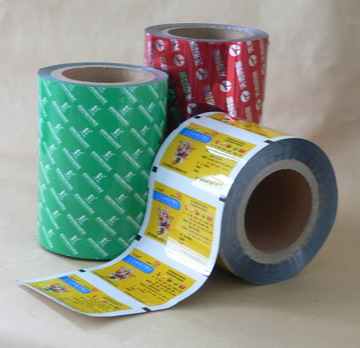What is composite membrane
2022-12-01Composite film refers to a multilayer structure film formed by combining various plastics with paper, metal or other materials through lamination, extrusion veneer, co-extrusion and other process technologies. Composite film is generally composed of substrate, laminating agent, barrier material, heat sealing material, printing and protective coating, etc.
The commonly used composite membrane structure is: surface layer/adhesive layer 1/intermediate barrier layer/cat layer 2/inner thermal seal layer. In the composite film process, the structure of a multi-layer composite material is usually expressed in a simplified way. For example, a typical pharmaceutical composite film can be expressed as: surface layer/printed layer/laminated layer/aluminum foil/adhesive inner layer (thermal seal layer).

Composite geomembrane is widely used in canal anti-seepage engineering. In recent years, geosynthetics have been widely used in civil engineering, especially in flood control and rescue projects, and their effects have attracted great attention of engineering technicians. For the application technology of geosynthetics, the state has put forward normative technical requirements from the aspects of seepage prevention, filtration, drainage, reinforcement and protection, which has greatly accelerated the promotion and application of new materials. This material has been widely used in the canal seepage prevention works in irrigation areas. Combined with the construction practice, the application technology of composite geomembrane is briefly discussed.
Composite geomembrane is an impermeable material composed of geotextile and geomembrane, which is mainly used for seepage prevention. The composite geomembrane is divided into one cloth and one film and two cloth and one film, with a width of 4-6 m, and a weight of 200-1500 g/m2. The physical and mechanical performance indexes such as tensile strength, tear resistance, bursting resistance are high, and can meet the needs of water conservancy, municipal, construction, transportation, subway, tunnel and other civil engineering. Due to the selection of polymer materials and the addition of anti-aging agent in the production process, it can be used in unconventional temperature environment.
Related articles
-
Hard film, also known as film, is the sheet used for plastic absorption, of which the thickness is more than 2mm is called plate, and the commonly use…
-
Aluminized composite film is a bright metallic film formed by evaporating high-purity aluminum wire into gaseous state at high temperature (1100~1200 …
-
The composite membrane is mainly used in reverse osmosis, gas separation, infiltration transpiration and other processes. Using two different kinds of…
-
Polytetrafluoroethylene (PTFE) composite fabric is a high-performance fabric with waterproof, moisture permeability and wind resistance. The morpholog…

